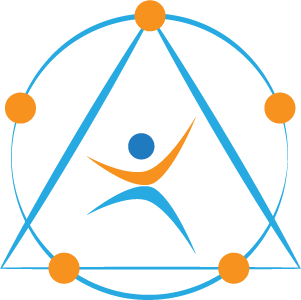Additional Cervical Correlations
Timothy D. Francis, D.C., F.I.A.C.A., D.I.B.A.K., M.S., D.H.M.
Abstract
Muscle dysfunction has traditionally been correlated throughout the body by Applied Kinesiology (AK) methodology due to cervical spine subluxation/fixation patterns. This paper adds additional muscle dysfunction correlations observed by this author.
Introduction
The cervical spine has seven times the mechanoreceptors than anywhere else in the spine. Therefore proper alignment and motion is of utmost importance for optimal body function. Previous subluxation/fixation patterns observed by this author will be reviewed as well as new observations for cervical subluxations.
Discussion
Fixations are a locking together of two or more vertebrae producing a predictable bilateral muscle weakness pattern. According to Leaf “Fixations are the body’s attempt to stop dural torque.” In a previous paper by this author entitled Additional Fixation Patterns the following patterns have been observed.
Cervical Spine Area
1. Occiput
Bilateral Muscle Dysfunction
Upper Trapezius
Finger Flexors
2. Occiput/Atlas
Unilateral Hamstrings (Supine)
3. Upper cervicals
Triceps (Long Head)
Subclavius
Sartorius
Inferior Gemelus
Popliteus
4. Mid-cervicals
Biceps (Short Head)
Opponens Pollicis
5. Lower Cervicals
Wrist Flexors
Brachioradialis
Quadratus Femoris
Teres Minor
These additional patterns follow the same rules for diagnosis and treatment as the original observations by Goodheart.
There is yet another bilateral muscle dysfunction pattern previously discussed in a paper by this author entitled Spinal Subluxation/Bilateral Muscle Syndrome Correlations. These particular muscle dyspoiesis only displays via manual muscle testing (MMT) when both the right and left sides are tested simultaneously. For example, the right middle deltoid tests strong in the clear as
well as the left middle deltoid. However, when tested together simultaneously they test weak.
These cervical patterns are as follows.
Cervical Vertebrae
1. Atlas
2. Fifth Cervical
Simultaneous Muscle Dyspoiesis
Teres Major
Middle Deltoids
Latissimus Dorsi
3. Seventh Cervical
Sternocleidomastoid
Unilateral muscle correlations was discussed by this author in a paper entitled Spinal-Rib Subluxation/Muscle Syndrome Correlations. Occular lock patterns were also discussed as noted below.
Cervical Spine
1. Inferior Occiput
Muscle/Syndrome
Ocular lock pattern with the eyes
held in a straight superior direction
Hiatal hernia
Rib cage torque
Anterograde lymphatic
2. Lateral Occiput
Ocular lock pattern with eyes held
up and out on ipsilateral side
Hyoid dysfunction
3. Second cervical
Ocular lock pattern with eyes held
straight to ipsilateral side
Hyoid dysfunction
4. C6/7 Counter rotation
Sartori us/Gracilis
Category II
The new additional cervical corrections are not related to a specific cervical vertebral level but rather to a specific type of subluxation. These are listed in the chart below.
Cervical Subluxation
1. Anterior Cervical
(C2-C7)
Muscle Dysfunction
Finger Flexors
2. Lateral Cervical
Finger Abductors
(Index-Middle-Ring)
3. Posterior Cervical
Finger Extensors
The anterior cervical will usually only therapy localize (TL) on the anterior portion of the vertebrae on the side of anteriority. This may be corrected manually with a push or pull procedure depending on how the vertebrae challenges and may be performed in the supine, prone, or seated patient position.
A lateral cervical may only TL on the lateral portion of the cervical vertebrae. A piece of paper is placed between the index/middle finger and/or middle/ring finger with the wrist in a neutral position and the elbow flexed to a perpendicular position. The subject is asked to hold the paper tightly between his/her fingers. If the manual correction is performed correctly, the subject is able to grasp the paper without letting it slip through the fingers. For the posterior cervical subluxation, the elbow is bent perpendicular, the wrist is in neutral, and the hand is extended to full open position. The examiner braces the front of the hand and attempts to flex the fingers into a fist.
Conclusion
These three patterns are valid for the second to the seventh cervical and give the practitioner as well as the patient an immediate reliable feedback system as to the efficacy of the manual adjustive procedure.
Resources
- Francis, Timothy D., Structural Corrections For Eyes Into Distortion Patterns. Collected Papers of the Members of the I.C.A.K., Vol. I Summer (1990-1991).
- Ibid., Spinal-Rib Subluxation/Muscle Syndrome Correlations. Experimental Observations of the Members of the I.C.A.K., Vol. I (1999-2000).
- Ibid., Spinal Subluxation/Bilateral Muscle Syndrome Correlations. Experimental Observations ofthe Members of the I.C.A.K., Vol. I (2000-2001).
- Ibid., Additional Fixation Patterns., Experimental Observations ofthe I.C.A.K., Vol. I, (2001- 2002).
- Ibid., The Occiput/Atlas Fixation., Experimental Observations of the I.C.A.K.-U.S.A., (2009-2010).
- Leaf, David, Applied Kinesiology Flow Chart Manual, 3rd. Edition. Privately Published. (1995).
